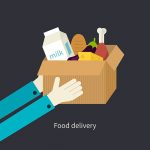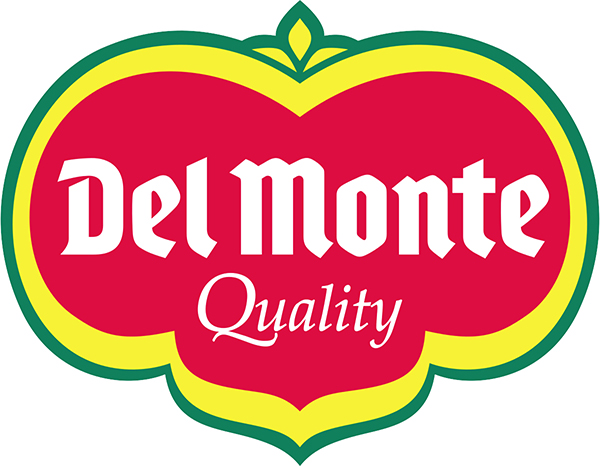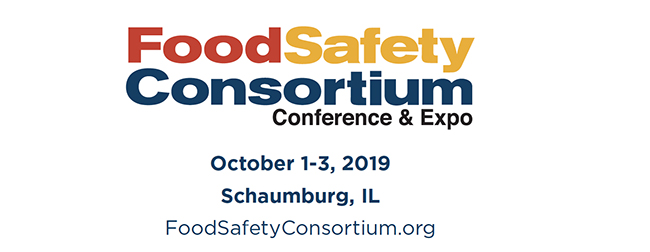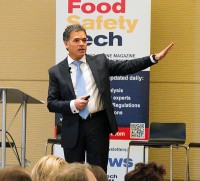Recalls have become an unfortunate reality for the food and beverage industry. It seems every month, another grocer pulls inventory from its shelves due to contaminated products that are potentially harmful for consumers.
Last month, it was Kroger that was forced to remove beef products from stores in Ohio, Kentucky and Indiana as part of Aurora Packing Company’s recall of more than 62,000 pounds of meat that may have been infected with E. coli. Not only do these situations hurt the reputation and bottom line of companies across the food supply chain—from the manufacturer to the retail store—there is the potential for these issues to become deadly.
The CDC counts 3,000 deaths, 128,000 hospitalizations and 48 million foodborne illness cases every year. While the food industry has put stricter guidelines into place for recalling contaminated products, the key to preventing illness is to take an even more proactive stance toward making food free of harmful pathogens before it reaches consumers’ plates.
Unfortunately, this is easier said than done.
The 2019 Food Safety Consortium Conference & Expo features an entire track on sanitation | October 1–3 | Schaumburg, ILComplexities of the Food Supply Chain
The food industry faces unique supply chain challenges. First, consider that the industry is dealing with products that come from the ocean or earth. Once obtained, these products are boxed, sent, in many cases long distances, to a facility via truck or cargo ship, where our foods undergo a number of processing mechanisms before being put back in a shipping container and sent off to a store. When they finally make it in-store, they’re moved from the backroom to the store floor. After all this, these products go into our mouths and through our digestive systems.
There are often many complex steps food has to go through before it makes it into our homes—and with each level of the food supply chain comes a new opportunity for things to go wrong and contamination to happen. What makes the food supply chain even more frightening is that pinpointing the root cause of harmful pathogens—such as E. coli or Listeria—by retracing all the potential contacts points is very challenging given their microscopic nature. All in all, the germs are beating us.
Old Disinfection Techniques Aren’t Cutting It
To mitigate the issue of contamination and avoid those dreaded recalls, food companies have prioritized disinfection. Most often, techniques include manually washing processing equipment with chemicals to keep them sanitized, and even spraying food products with antibiotics to directly kill harmful germs. However, these solutions have many limitations and are either intermittent in their use or insufficient to tackle the complexity of challenges associated with the food processing environment.
First, the tide is beginning to turn on the use of chemicals on food products, with consumers having growing concerns with introducing antibiotics in their food. There’s heightened and justified skepticism over the use of antibiotics and fears over the potential impact on resistance through overuse. In other words, consumers are afraid of the potential side effects from ingesting these chemicals on a daily basis and the alternative resistance bacteria they promote.
The truth is that the excessive use of antibiotics makes them less effective. This is due to frequently exposed bacteria developing resistance to antibiotics over time. The result is that antibiotics are no longer as effective at killing these germs, which is at the heart of great concern for the public’s health.
Resistant bacteria can be passed from food-producing animals to humans in a number of ways. If an animal is carrying resistant bacteria, it can be passed on through meat that is not handled or cooked properly. Plus, food crops are regularly sprayed with fertilizers, which can contain animal manure with resistant bacteria. Once spread to humans, resistant bacteria can stay in the human gut and spread between individuals. The consequences of the introduction of these germs and the subsequent consumption of them include infections that would not have happened otherwise.
Second, cleaning equipment with chemicals and disinfectants is important, but only intermittently effective. While someone working in a food processing plant uses chemicals to clean off a surface or container before food touches it, there’s still an opportunity for harmful bacteria to land on the space in between washes from many sources including the air, packaging, other food, etc. Not to mention there is a wide variety of different surfaces and nodes that food touches as it moves throughout a plant and across the supply chain. Every single surface is a distinct and new opportunity for germs to live, and simply scrubbing these areas a few times a day (or once a day in some cases) simply isn’t enough to keep these germs away. By solely relying on the intermittent use of chemicals to sanitize, it seems virtually impossible to ensure contamination is not ever introduced along the way to your table.
The Introduction of Continuous Disinfection Using Light
Intermittent sanitization hasn’t been disproven to be a wholly effective way to kill germs—it’s simply not a strong enough line of defense in and of itself. Perhaps, one of the best ways to protect our food from harmful bacteria and prevent expensive recalls altogether is to introduce and layer in a new breed of “continuous disinfection” technology using bacteria-killing visible LED lighting directly into the process.
Going back to more than a century ago, scientists have known that certain wavelengths of light are highly effective at destroying bacteria. Ultraviolet (UV) light is extremely powerful, but it is also especially dangerous to humans and causes things like plastics to become brittle and crack. UV light directly impacts the DNA in people, animals and plants, along with bacterial cells.
There is, however, a very human-friendly frequency of light (405 nanometers), which is in the visible spectrum of light, that is completely harmless to humans, but just as devastating to bacteria. It activates the porphyrin molecules that exist only within unicellular organisms such as bacteria and fungi. Humans, animals and plants do not have these particular molecules. Exposure to 405 nm light directly activates these molecules and essentially rusts bacteria from the inside out destroying any bacteria that is exposed to this human-friendly light. The ability of this new LED tool to be safely used around the clock allows for it to be acting continuously. This continuous nature goes above and beyond the existing limitations of intermittent cleaning.
With the advent of LED lighting, it is now possible to “tune” the frequency of light with extreme precision. The significant breakthrough of isolating light to this specific frequency of violet-blue light has now begun to enter the food processing industry. It is taking its place as a critical component to the layered defenses against harmful bacteria entering the food chain. When left on, this light continuously kills bacteria, preventing any germ colonies from forming and replicating. This has now become the perfect complement to the proper cleaning and sanitizing of all surfaces used in food processing and preparation—intermittent chemical cleaning working together with continuous disinfection from light.
In short, avoiding outbreaks and infection crises is all about smart prevention. Recalls are a reactionary solution to the problem. The key to preventing these potentially deadly (and costly) situations is to make sure that all facilities that process and handle food are continuously disinfected. The good news is that tech startups are at the helm of developing these new tools for killing germs before they even have a chance to have a seat at our tables.

























